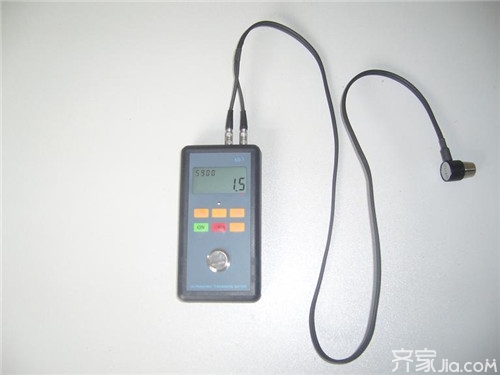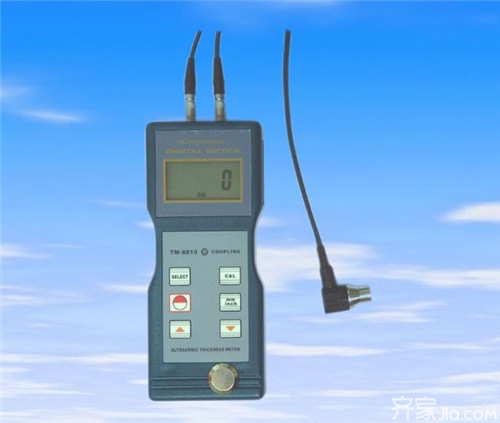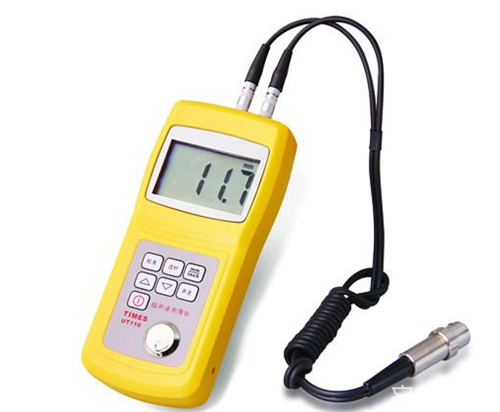
[Ultrasonic Thickness Gauge Usage ]
Any material that allows ultrasound to propagate inside it at a constant speed can be measured using this principle. Ultrasonic Thickness Gauge uses the latest high-performance, low-power microprocessor technology, based on the principle of ultrasonic measurement, can measure the thickness of metal and other materials, and can measure the sound speed of the material. Thickness measurement can be performed on various pipelines and pressure vessels in production facilities to monitor the degree of thinning after they are eroded during use. It is also possible to make accurate measurements on various plates and various processed parts. Thickness gauges can accurately measure various plates and various processed parts. They can also monitor various pipelines and pressure vessels in production facilities and monitor the degree of thinning after they are eroded during use. Can be widely used in petroleum, chemical, metallurgy, shipbuilding, aviation, aerospace and other fields.
What are the categories of thickness gauges?

First, according to the material material, such as steel plate, strip, film, paper, metal foil, etc. thickness gauge paper thickness gauge: for measuring thickness of various paper, cardboard and other sheet material thickness measurement below 4mm Instrument: used to determine the thickness of thin films, thin sheets, etc., wide measurement range, high measurement accuracy Ultrasonic Thickness Gauge: Suitable for measuring metals (such as steel, cast iron, aluminum, copper, etc.), plastics, ceramics, glass, glass fiber and other Thickness of any supersonic good conductor.
X-ray Thickness Gauge: Applicable to the production of aluminum, copper, steel plate and other metallurgical materials for the company's products, can be matched with the rolling mill, used in hot rolling, casting, cold rolling, foil rolling.
Coating Thickness Gauge: F-type probe can directly measure the thickness of non-magnetic coating on the surface of magnetic materials (such as steel, nickel) (such as: paint, plastic, enamel, copper, aluminum, zinc, chromium, etc.). It can be applied to the thickness measurement of electroplated layers, paint layers, enamel layers, aluminum tiles, copper tiles, babbitt alloy tiles, phosphating layers, paper, and also to the thickness measurement of hull paints and underwater structures.
Second, according to the test method is divided into:
1. The contact thickness gauge is divided according to the size of the contact material. A touch-sensitive thickness gauge, a face-contact thickness gauge, and a non-contact thickness gauge are non-contact thickness gauges according to different testing principles. Divided into: Laser Thickness Gauge, Ultrasonic Thickness Gauge, Coating Thickness Gauge, X-ray Thickness Gauge, White Interference Thickness Gauge, Electrolytic Thickness Gauge III. According to the different test principle, the thickness gauge is as follows: :

Magnetic thickness measurement: Measurement of the thickness of the non-magnetic layer on a magnetically permeable material. Magnetic materials are generally: steel, iron, silver, nickel. This method has high measurement accuracy.
Eddy Current Thickness Measurement: The eddy current thickness meter using the vortex principle is suitable for measuring the thickness of non-conductive layers on conductive metals. This kind of magnetic thickness measurement method has low accuracy.
Ultrasonic Thickness Measurement: Suitable for measuring the thickness of a multi-layer coating or where the above two methods cannot be measured. However, it is generally expensive and the measurement accuracy is not high.
Xiao Bian concludes: The above introduced the use of ultrasonic thickness gauges and hopes to help everyone. For more relevant knowledge, please continue to pay attention to this website information platform. Follow-up will present more exciting content for everyone.
Curtain installation method
adopt hight-quality lenses, effectively waterproof and shockproof, to block saliva splash and ensure safe travel
Effectively prevent the impact of dust , droplets, saliva, sand , dust, liquid , scrap iron, gas and other harmful substances or splashing causes irritation and injury to the eyes.
Occasion: Hospitals, mining, sports, oil, drilling, scientific research, driving, steel mills, factory operations labor protection industry,liquid research, field investigation, severe sandstorm, heavy dust and other environmental occasions.
Non Toxic And Pollution-free Safety Goggles
good biocompatibility. Non toxic and pollution-free
Xinguankang Medical Research(Shandong) Co., Ltd , https://www.xgkhealthcare.com